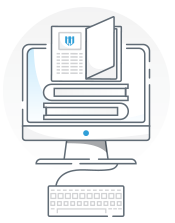Are you interested in reducing your yearly taxable income? Like most keen real estate investors, you are looking for ways to save money and increase your cash flow. A self-funded pension plan might be right for you.
A self-funded pension plan, also called a defined benefit plan, is a powerful tax strategy for self-employed investors who have a steady income. The main idea behind setting up a self-funded pension plan is to lower your current year's taxes and provide you with options when you retire.
We recently chatted with Royal Legal Solutions' tax expert, Pete Schindele, CPA, and discussed this powerful tax strategy. Feel free to watch our discussion, "Self-Funded Pension Plans for Entrepreneurs," for more information.
If saving money on taxes and having an additional income is something that interests you, please read on.
Also called a defined benefit plan, a self-funded pension is a retirement tool. A pension is a retirement fund for employees paid by the employee, employer, and in some cases, both. When the employee retires, the fund pays out an annuity.
Now that you know what a pension is let's delve a little deeper into the self-funded part. Anyone can set up a retirement fund, even if they are self-employed. For instance, suppose you have an LLC or an S-Corp as your real estate business, and you are the only employee.
As an employee in your business, you can create your pension and fund it with the profits from your company. It would help if you considered some things before setting up a self-funded pension plan.
Anyone can set up a pension. Here are some things to consider before you make that decision–ideally, you:
If this sounds like your situation, a self-funded pension plan might be just the right tax savings vehicle for you. As with every business decision, you need to consult with your tax professional to ensure that a self-funded pension is a prudent business decision.
There are no hard and fast rules for setting up a self-funded pension. It would be best if you talked to your financial advisors and tax professionals to determine the ideal time for you. Our tax expert, Pete Schindele, CPA, provides some general guidelines that might indicate that the time is right for you:
There are forms you will have to fill out with the help of a financial professional to get started. In addition, you will need to have at least three years of W-2s. The tax documents provide information to your tax professional about how much you will invest in the plan.
To maintain the pension, you must submit an additional tax document every year. Then, yearly, an actuary does a study to ensure that you funded your retirement plan appropriately. The actuary's fee ranges from $1,000 to $2,000 per year.
Suppose you have maxed out your other retirement plans, but you still have an additional income you want to protect from taxes.
Let's say that you have an additional $30,000. You would set up a pension and fund it with that extra $30,000. That money is tax-free, and you have saved about $9,000 in taxes, minus the actuary's fees.
That is not to say that a self-funded pension is without drawbacks. There are some things to keep in mind before you decide on making this decision.
The self-funded pension is ideal for businesses or investors with a stable income. Wild swings in revenue are not going to work. Remember, you have to fund the plan every year–this is a fixed cost.
The actuary fee is steep. It ranges between $1,000 to $2,000 per year.
If you overfund the pension, you have to pay an excise tax.
Here is an illustration of how that would work. You have paid into your pension to the tune of $600,000. The IRS investigates your balance and determines that your fund should have $500,000. You have $100,000 too much in the pension. The IRS will force you to pay an excise tax on that additional $100,000.
A self-funded pension is not great for younger investors because it will be long before they can enjoy the funds. It's much better for more experienced (age-wise) investors.
You have the opportunity to name heirs, or you can get a lump sum payment from the pension when you retire.
Another thing you might consider is using the pension disbursements to pay for life insurance to earn even more money. Term life insurance premiums will be expensive when you retire because of your age. Instead of drawing the money from the pension, you can use it to pay for the life insurance premiums.
The life insurance will not be taxed when you die, and the income goes to your heirs. The payout from the life insurance will be more than from the pension.
With a Solo 401K, you are:
With a self-funded pension, you are:
First, you should invest in a solo 401K, an SDIRA; then, you should set up a self-funded pension with additional income.
It depends on the situation. There is a cost to implement, and you need to check your tax rate. Those variables make it impossible to determine a baseline requirement. Any advice requires you to do a cost-benefit analysis with your CPA or tax professional.
A self-directed pension plan requires you to have a history of good revenue for three to four years. It's also ideal if you have already maxed out your Solo 401K contributions—a couple of years.
In general, the pension is ideal for older investors. Be careful with the excise tax. Work with your tax professional to ensure you don't overfund the plan. The operational costs to set up and maintain your pension plan are not prohibitive. Finally, you can pass the funds on through the pension or clever use of a term life insurance policy.
To learn more about this powerful tax savings strategy and others that you can use to keep more of your earnings, book a tax consultation by taking our tax quiz. The information you provide will enable us to have a productive discussion the first time that we speak.

Scott Royal Smith is an asset protection attorney and long-time real estate investor. He's on a mission to help fellow investors free their time, protect their assets, and create lasting wealth.

Ready to know more than your attorney? Join our community platform where you'll get immediate FREE access to all our best educational resources for real estate investors. Including 8 Masterclasses, group mentoring replays, and much, much more.
Join thousands of real estate investors in all 50 states as they enjoy exclusive content, special promotions, and behind-the-scenes access to me and my guests. No spam, ever. Just great stuff!
